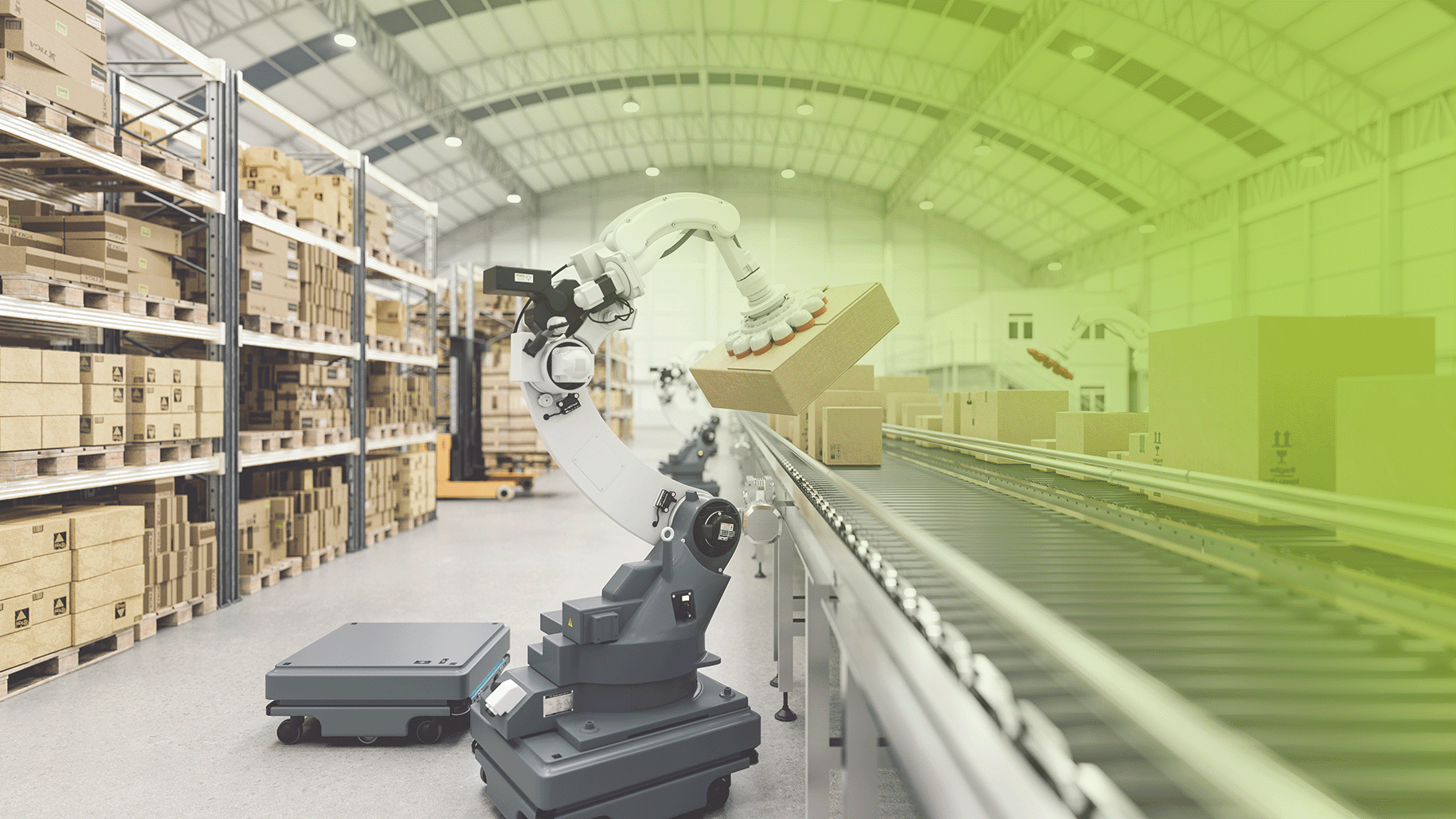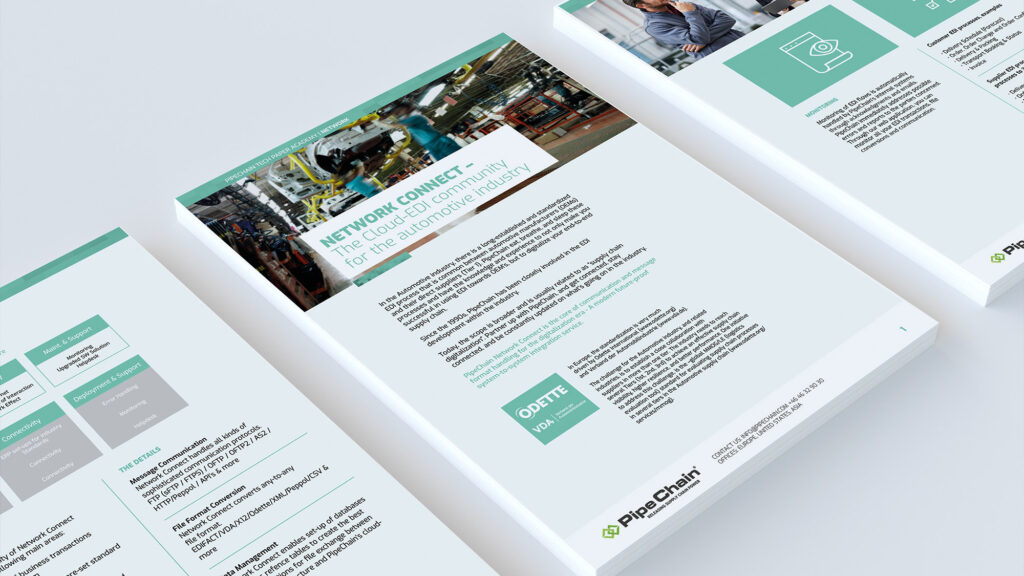
Sharing supply chain data drives innovation and business development – and vice versa
What this column is about is nothing new. In fact, as the headline says, “and vice versa”, this is what most examples of innovative business development in supply chains have looked like over the past 20 years. It has been entrepreneurial forces that, based on ideas for new business models, and through the collection and smart use of data in the supply chain, have managed to create businesses that have out-competed incumbents or at least changed the competitive landscape significantly. Today, data availability is much greater than it was ten or twenty years ago, so it is now more about identifying the ideas that enable new business models.
The article from the roundtable on data sharing in supply chains, on pages 34-37, issue 2 2021, of Supply Chain Effect, so aptly expresses what increased digitization and data sharing is all about:
“- Most interesting supply chain data is available if you just want it. I think one key is that boards and management need to understand the value of data and encourage people to work across and share their data. It’s largely a management issue,” says Henric Hasth, CEO of Toyota Material Handling Sweden.”
Let’s take a cue from this and highlight an old example from the US and the world’s largest grocery company, Walmart. More than 30 years ago, Walmart started a cultural revolution in terms of data sharing in supply chains. They started sharing point-of-sales data (by item, store, and day) with their suppliers. The suppliers in turn had to analyze the data and come back to Walmart with their suggestions on how Walmart should reallocate in stores, increase that supplier’s assortment to increase sales and profitability to the benefit of all stakeholders. The suppliers now started to compete with Walmart with their proposals, thus contributing to in-store innovation and business development. Walmart would never have been able to analyze all this data on its own, nor would it have been able to create the dynamics created by the suppliers’ mutual creativity and competition. Already at this time, there was talk that Walmart was experiencing a so-called network effect and that the grocer had created a more competitive supply chain compared to its competitors Kmart and Sears. The results were impressive!
Read more about data-driven supply chains for retail

A picture is worth a thousand words
Source: IndustryWeek, Matt Waller, chief data scientist, and PV Boccasam, CEO, Orchestro, 12 August 2013.
The main impetus, as usual, comes from the search
No matter what we’re talking about, the biggest impetus comes from the search. It’s about education, it’s about invention and innovation in general, it’s about entrepreneurship, it’s about culture and it’s also about the great ideologies that have underpinned societies as we know them today. But many would argue that power and money can also have an impact in all these respects, and that is certainly true, but the basis for development comes from the will to explore and improve.
Back to our reality and our supply chain reasoning – how do we achieve a corporate culture that drives change for the better, the smarter, the more sustainable, and so on? The answer to that question does not fit into this column, but we may have to devote an entire issue of Supply Chain Effect to it. But some clear conclusions can certainly be drawn regarding the ability to create smarter supply chains based on a higher degree of data sharing.
Read “How to reach data-driven supply chains”
What enables and disables a higher degree of collaborative data sharing?
I would like to summarize the enablers and barriers to higher levels of collaborative data sharing in the following three conclusions:
- The first conclusion is about what the roundtable I referred to in the introduction of my chronicle highlights. It is ultimately a management issue – and indeed a board issue – and it is about measuring the right things and encouraging the right behaviours in an organisation. If the insights of management and board are missing, probably not much will happen in terms of data sharing in supply chain.
- The second conclusion is actually about power, which comes either from the company itself and its external relationships (e.g. customers and suppliers) or from the industry and the industry initiatives that have been initiated and become successful over time. In the absence of the power of the company itself and of the industry initiatives, it is very difficult and costly to get its supply chain to change towards higher levels of collaborative data sharing.
- The third conclusion is about the underlying trends and technological enablers of data sharing itself. Here we can see that many conditions are in place today, where both trends and technology speak in favor of increased data sharing. But a major challenge is how to structure and standardize data exchange to make it scalable.
Managing and coordinating tomorrow’s supply chain networks will require companies and industries to develop and adopt more structured ways of collaborating (process models with related standardized data exchange), which are scalable, if rapid, near seamless and frictionless data exchange is to be achieved. This is largely lacking in supply chains today.
Smart ideas win in the long run – if not within companies, then in the form of new companies
We won’t be exchanging less data in the future, so really there’s only one way forward and that’s to understand how businesses and supply chain can better collaborate on data sharing to create added value. If we assume that it all starts in management and governance, the absolute recommendation is to think big, i.e. find big problems and create big impact solutions. It is only when we succeed in presenting sufficiently attractive business cases in the supply chain area that we can get both management and board on board. And if no one listens, the ideas will hatch elsewhere and emerge in someone else’s company or even as a whole new company.
-Hans Berggren is CEO of PipeChain
Read “Three crucial prerequisities for data driven decisionmaking”
Insights

If you are interested in learning more about how to create a powerful connected supply chain, here are our latest insights.
Tech papers

To help you get a deeper and better understanding of our solutions and your supply chain, we have developed a number of detailed tech papers on different subjects.
-
Necessary
These cookies are not optional. They are needed for the website to function. -
Statistics
In order for us to improve the website's functionality and structure, based on how the website is used. -
Experience
In order for our website to perform as well as possible during your visit. If you refuse these cookies, some functionality will disappear from the website. -
Marketing
By sharing your interests and behavior as you visit our site, you increase the chance of seeing personalized content and offers.


